Special Report
Your Ultimate Guide to What's in Season Right Now

Published:
Last Updated:

Depending on where you live, early spring may be a rough time to try to eat locally. Either the winter storage crops have diminished or the new shoots have yet to emerge. Luckily, fresh, in-season, domestically grown produce is available year-round, largely due to the state of California, which grows about 80% of the produce in the United States.
24/7 Tempo put together your ultimate guide to what’s in season right now, including storage crops, freshly ripened fruits, and spring shoots.
Root crops and winter squash can stay perfectly fresh with the right storage conditions, even in simple basement root cellars. Advancements in storage techniques have also prolonged the seasons of certain crops.
Apples, which are largely harvested in summer through fall, can be kept crisp and fresh for a whole year by controlling the temperature, humidity, and percentage of oxygen and carbon dioxide in the storage facility. Here are the foods with the longest shelf life.
Cool weather crops like brassicas–the genus that includes mustards, broccoli, kale, and cabbage–thrive in the winter and early spring months of California, before hotter temperatures begin to set in. Buying produce while it’s in season not only provides the most flavor, but also the best prices. Here are places where people pay the most for food.
Click here for the ultimate guide to what’s in season right now.
Methodology
To determine which produce is currently in season, 24/7 Tempo referred to the Seasonal Produce Guide provided by the U.S. Department of Agriculture, focusing on fruits and vegetables with widespread availability, rather than specialty items.
Although many items not on the list can be grown on a small scale, the crops selected here are produced commercially in the contiguous 48 states. Crops grown in Hawaii were excluded.
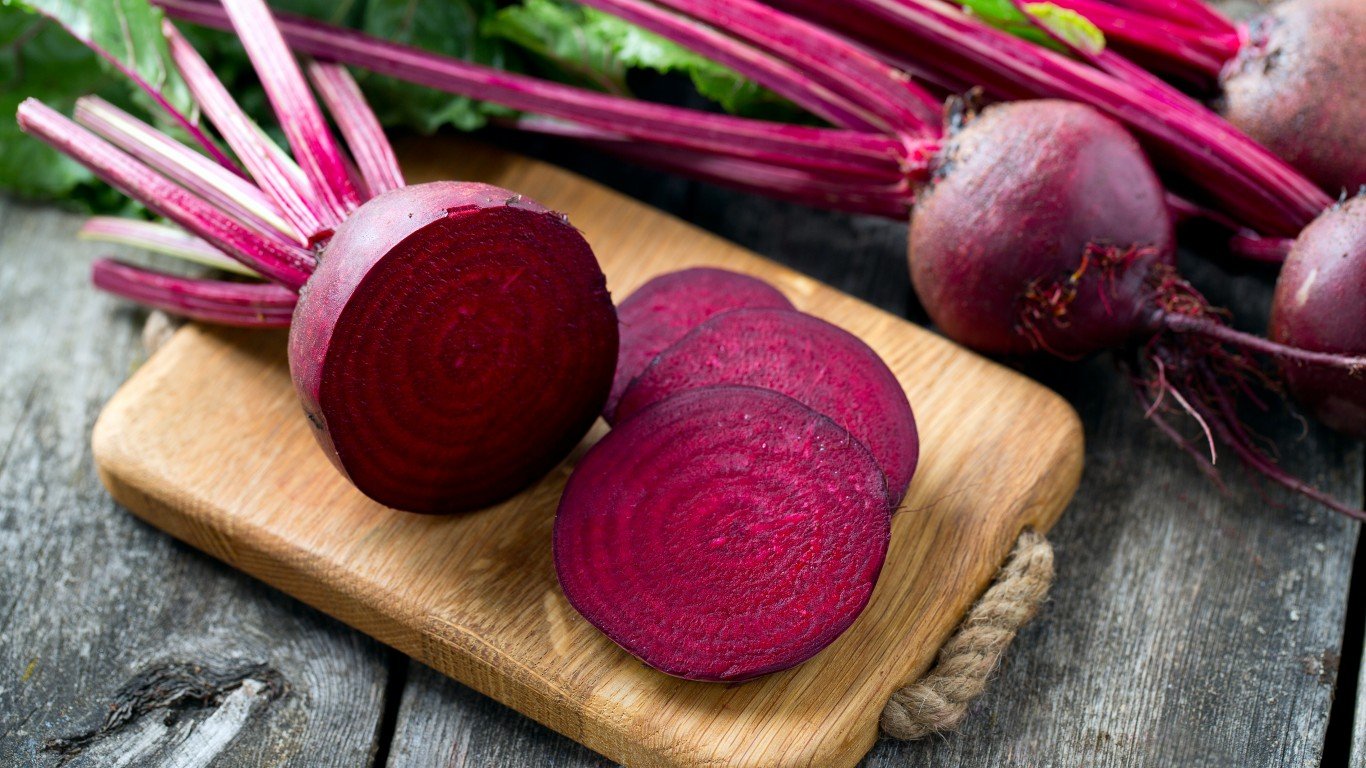
Beets
Although beets are fresh and in season from fall through spring, they can be enjoyed any time of year as they can be kept in storage for up to five months.
[in-text-ad]

Grapefruit
Florida is the main U.S. grapefruit producer, with Texas and California in distant second and third places. These juicy gems are best procured between November and June, with peak production (i.e. deliciousness) between December and April.
Leeks
Known as a cold weather crop, leeks can be grown year-round in California, but are freshest from September through April.
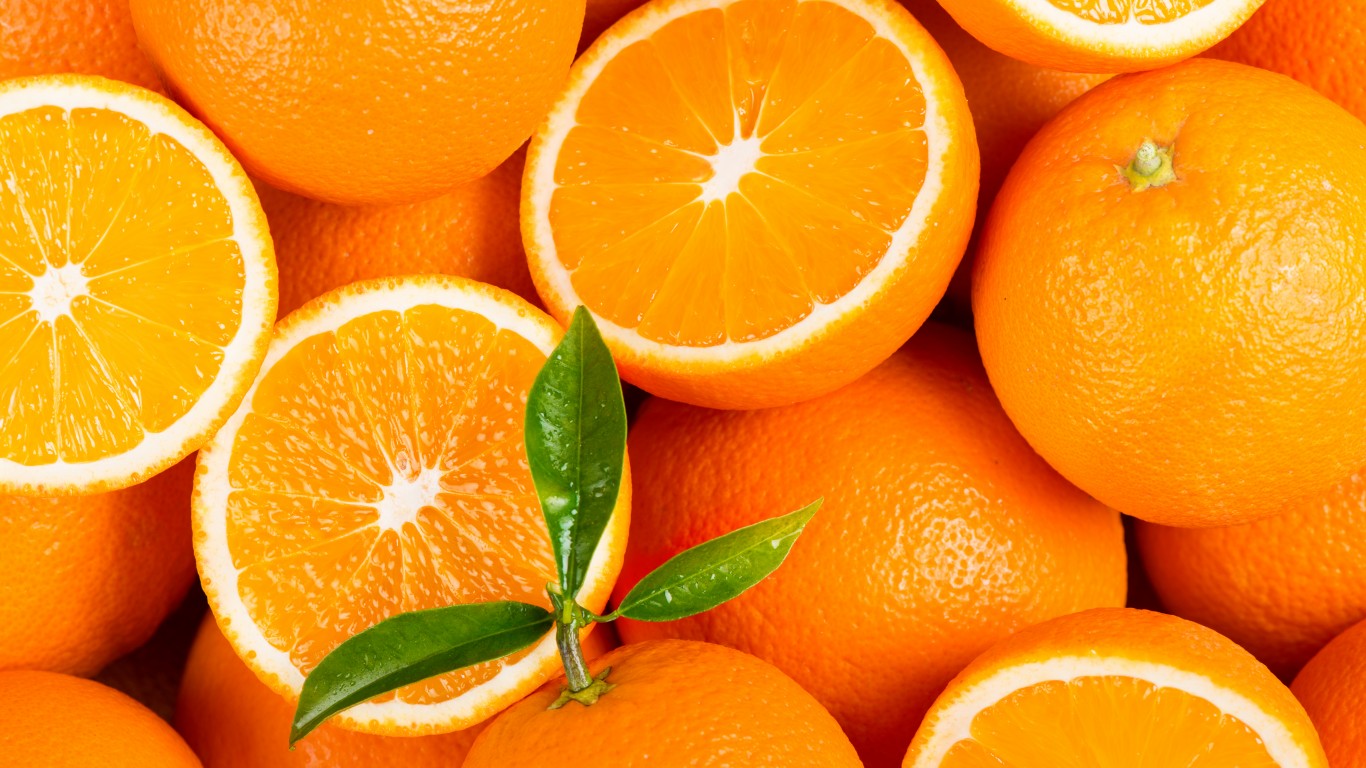
Oranges
Although oranges are grown year-round, the seasonal specialties that Florida is known for start to peak in January. By March, many are still going strong on the shelves, including navel and blood oranges.
[in-text-ad-2]
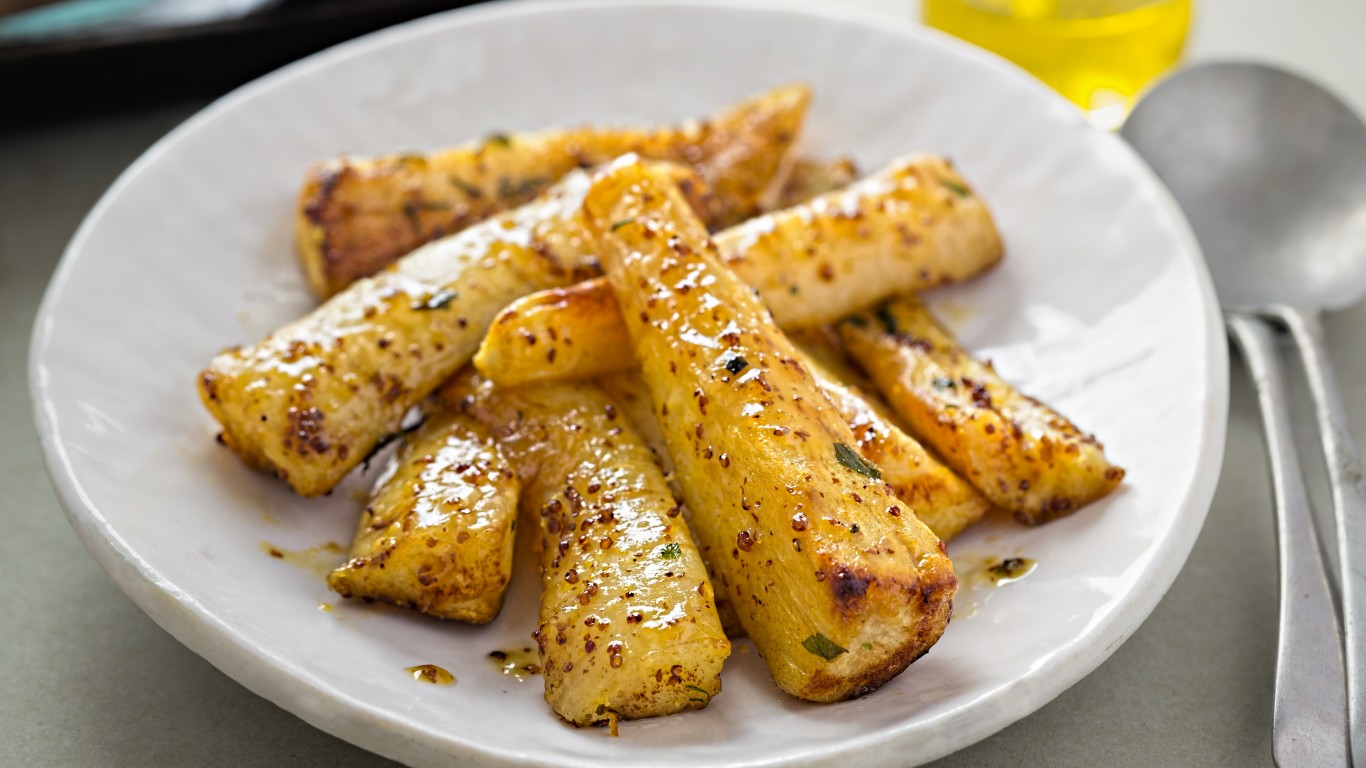
Parsnips
Parsnips are available from October through May. Known as a cold weather crop, they can be left in the ground for winter and harvested in the spring.
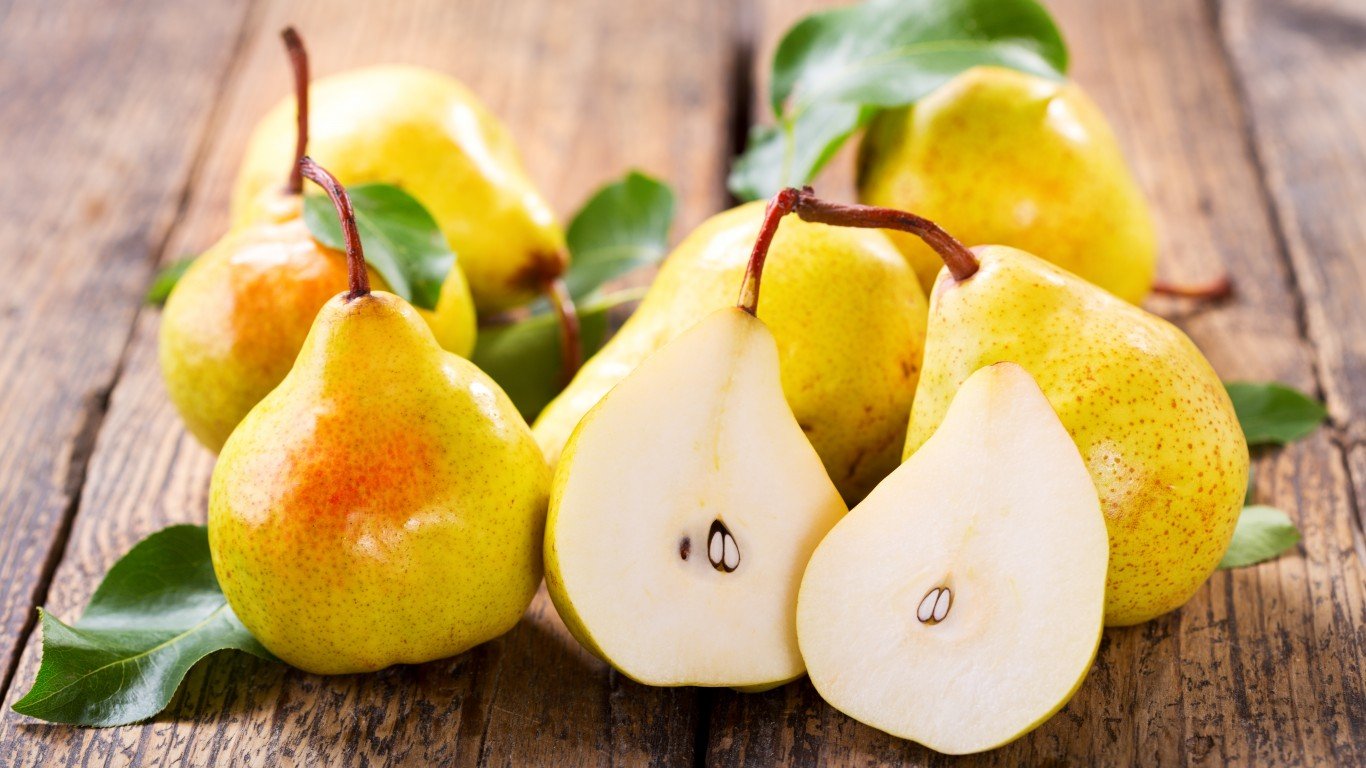
Pears
Several varieties of domestically grown pears are available in March, including Anjou, Bosc, and Concorde.
[in-text-ad]
Potatoes
Idaho and Washington produce over half of the potatoes grown in the U.S. They grow year-round and store remarkably well, with major harvests happening from mid-summer through late fall.

Rutabagas
A winter storage crop, rutabagas are available from October through March. Be sure to peel the waxed skin off before cooking.
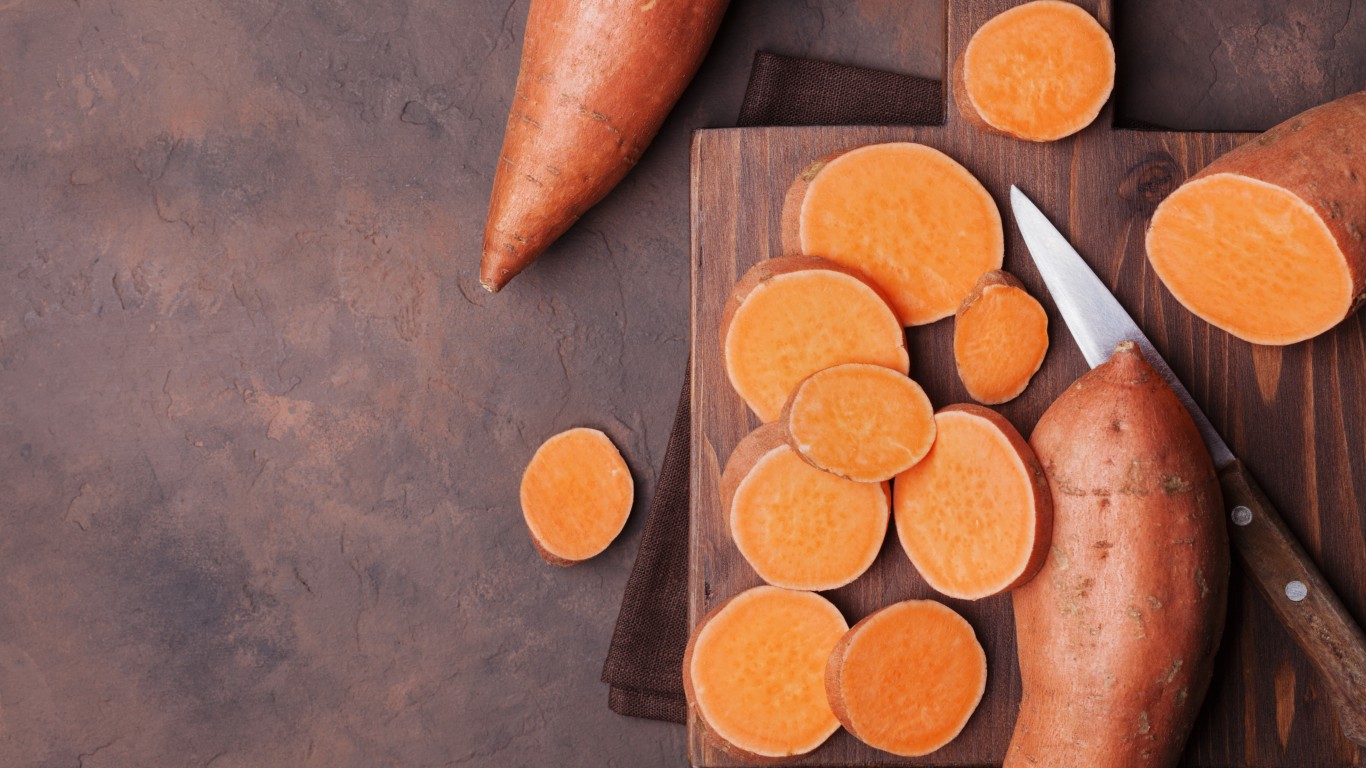
Sweet Potatoes and Yams
Harvested in the fall, sweet potatoes store well and are generally available year-round. North Carolina produces 60% off all sweet potatoes grown in the U.S.
[in-text-ad-2]
Winter Squash
Winter squash is harvested in summer and fall, but stores so well that it’s generally available until at least April.
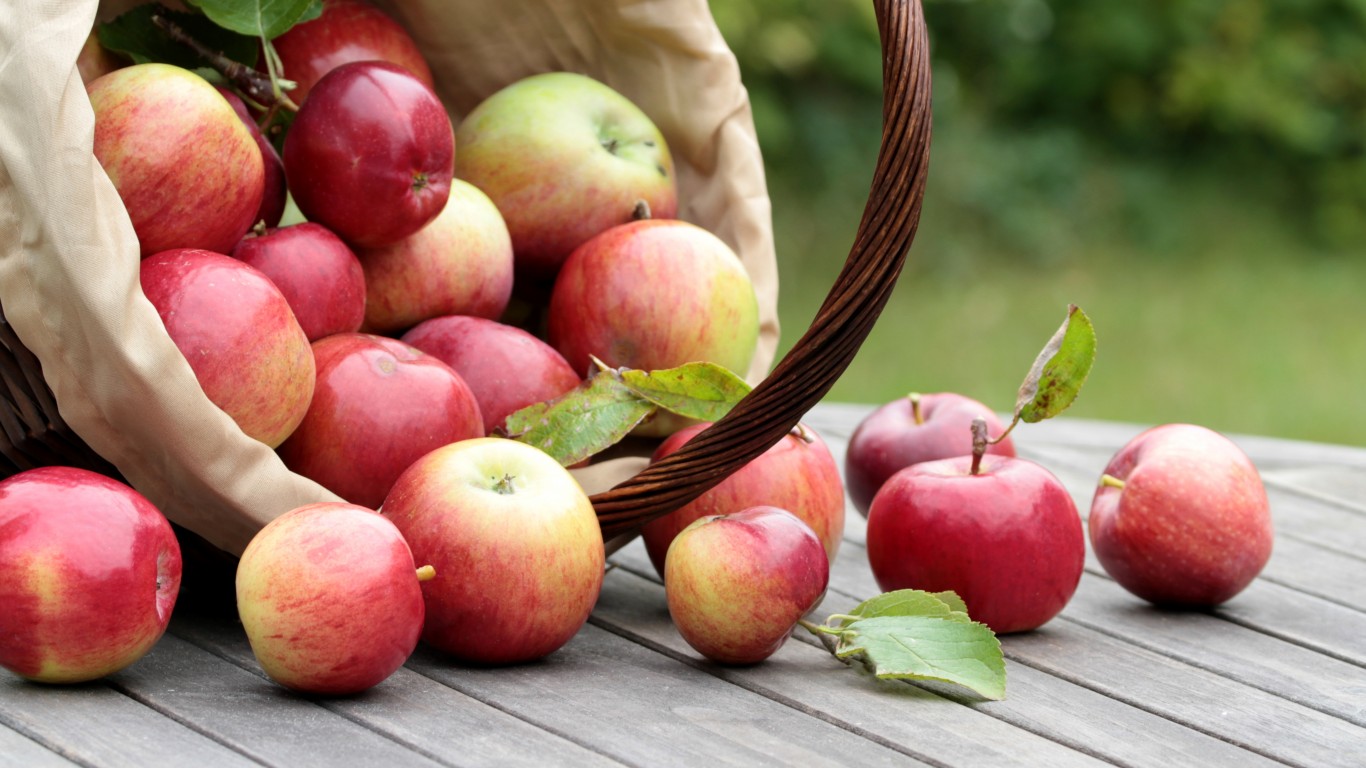
Apples
Most of the apples consumed in the U.S. are grown in Washington, Michigan, or New York. Precise climate controlled storage environments allow us to have fresh, domestic apples year-round.
[in-text-ad]

Asparagus
California produces almost 80% of the fresh asparagus that is grown domestically. Harvests start in February, peak in March, and dwindle by June.
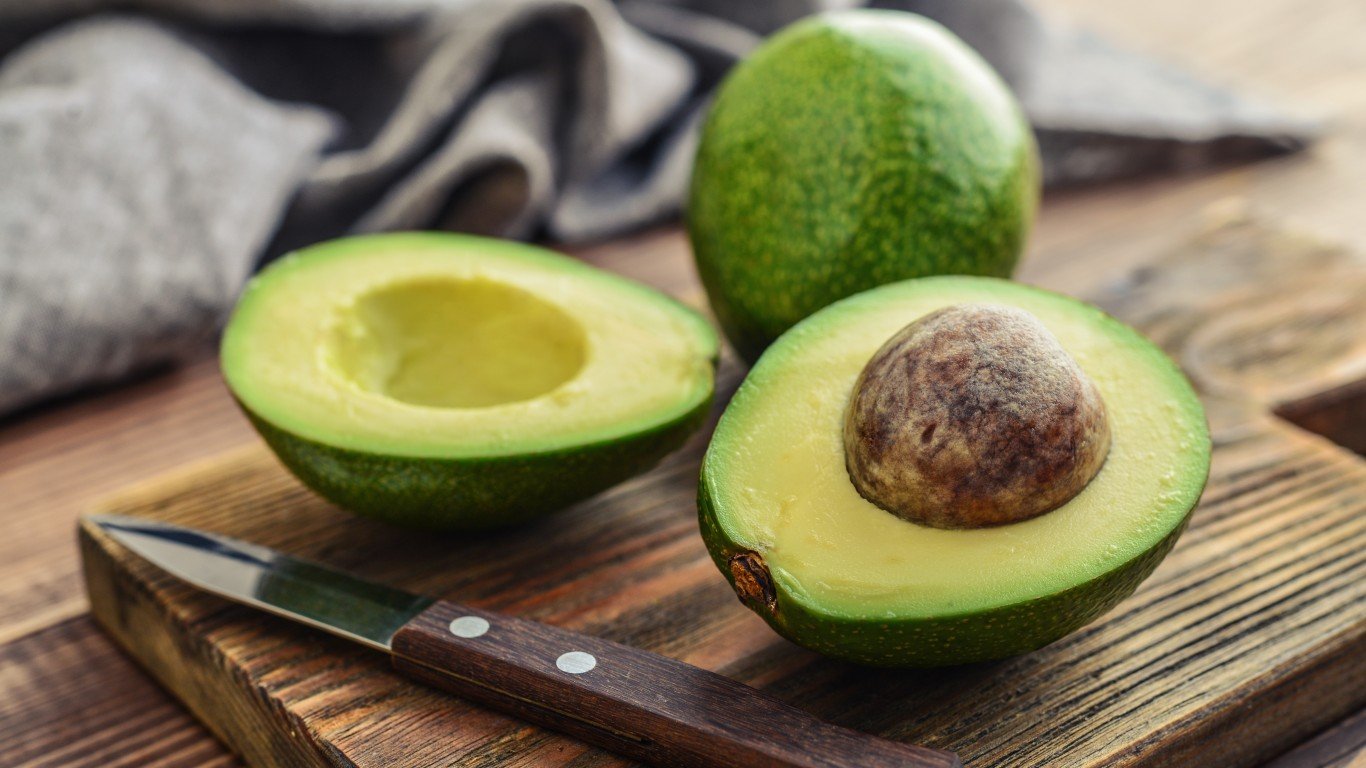
Avocados
Avocado season in California runs from February through September. Although peak harvests don’t happen until summertime, March is when these fruits really start ripening.
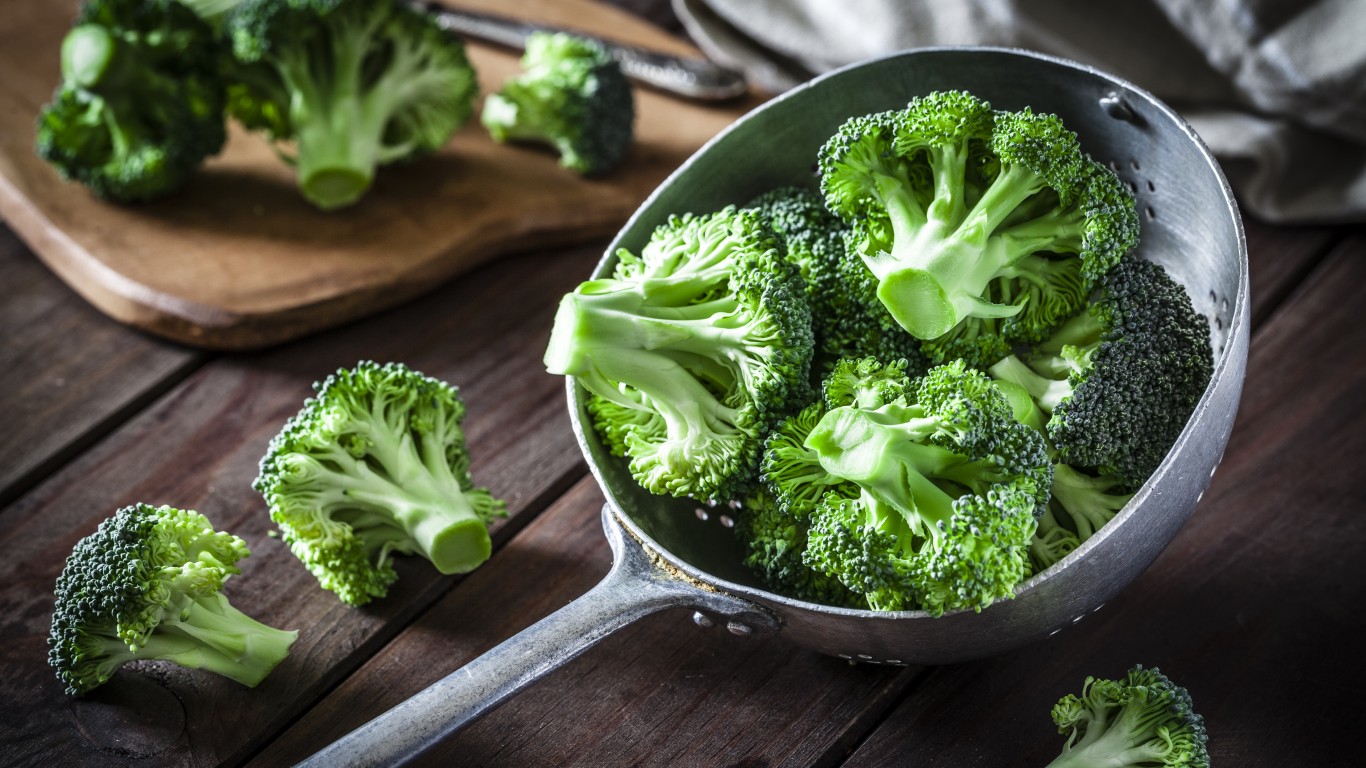
Broccoli
Broccoli is available year-round, but as a cool weather crop, its peak season is between October and April, when temperatures are lower.
[in-text-ad-2]
Cabbage
Another cool weather crop, cabbage is produced in the fall through spring months in the South and in the summer and fall months in northern states, leading to year-round availability. The biggest cabbage producing states are California, Florida, New York, Texas, and Wisconsin.
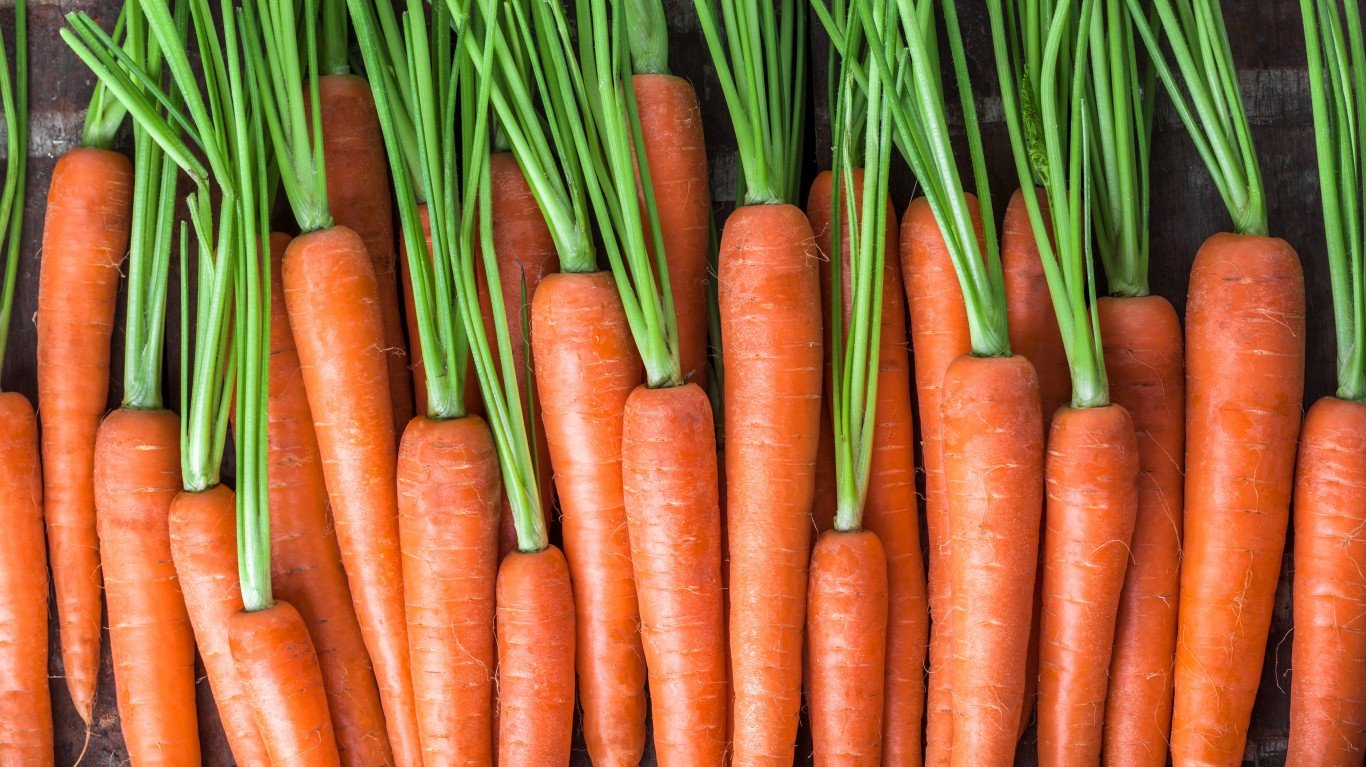
Carrots
Carrots, usually a summer and fall crop, are grown year-round in California. Over 80% of domestically grown carrots are grown in California, with Michigan and Texas also producing significant yields.
[in-text-ad]
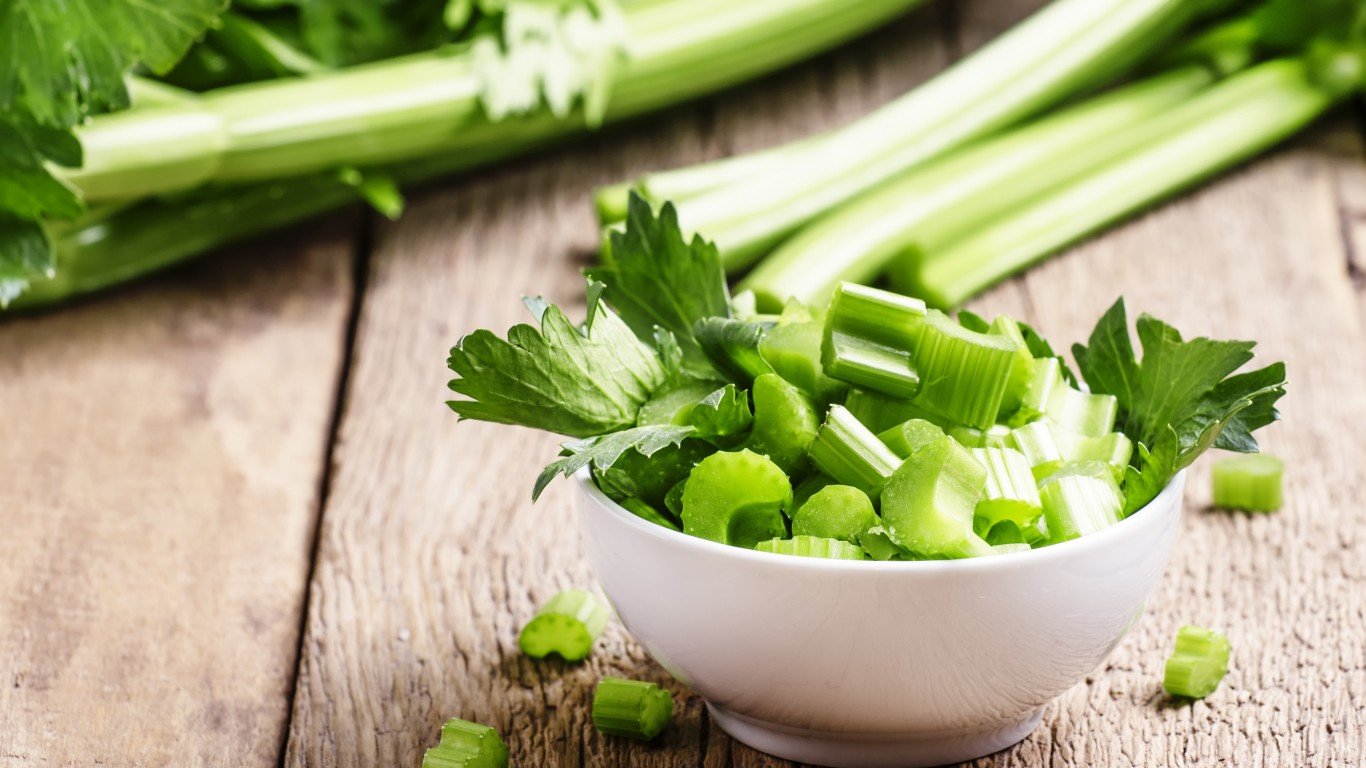
Celery
Celery thrives in cooler conditions and is grown year-round in the U.S., with Michigan and California leading in production.
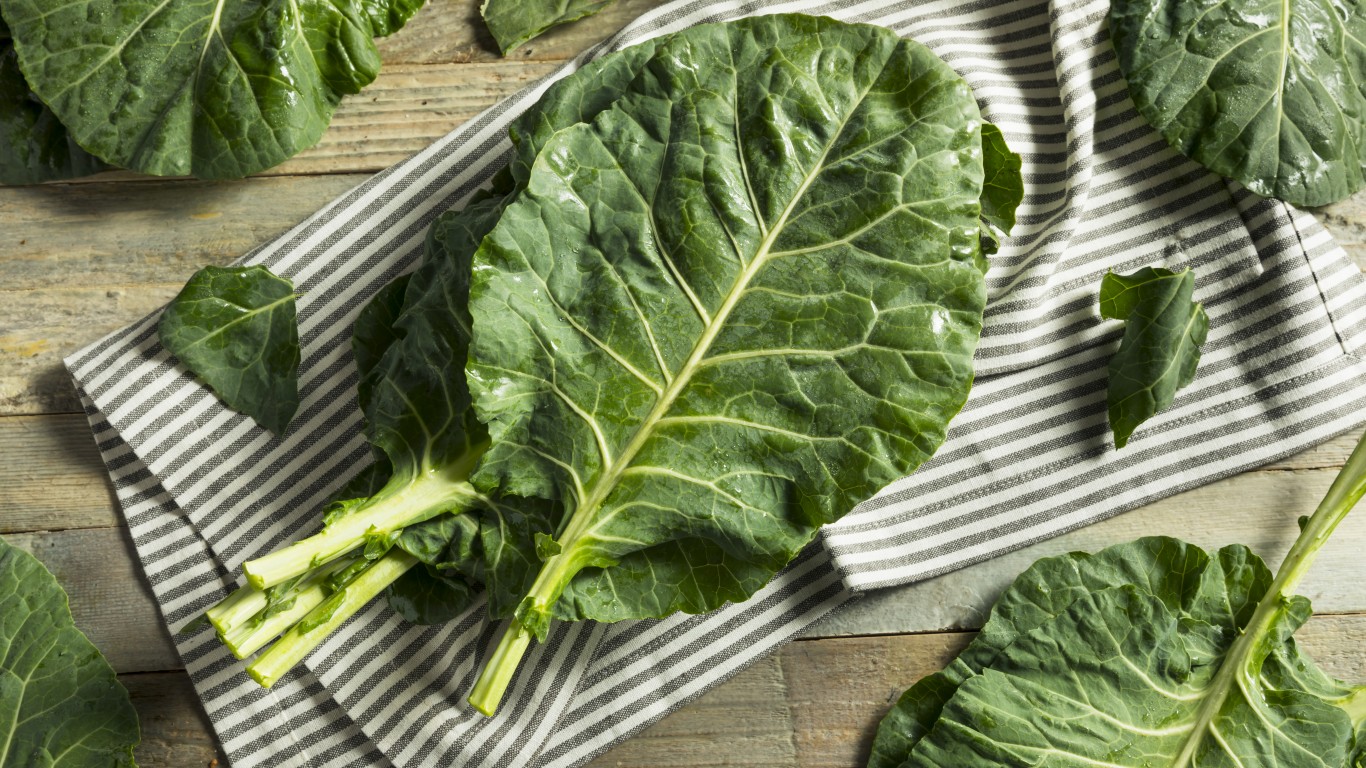
Collard Greens
Collards are available year-round, but have a peak first harvest between January and April, as they grow best in cooler weather.

Garlic
Over 90% of the commercial garlic in the U.S. is grown in California. This storage crop is available all year.
[in-text-ad-2]
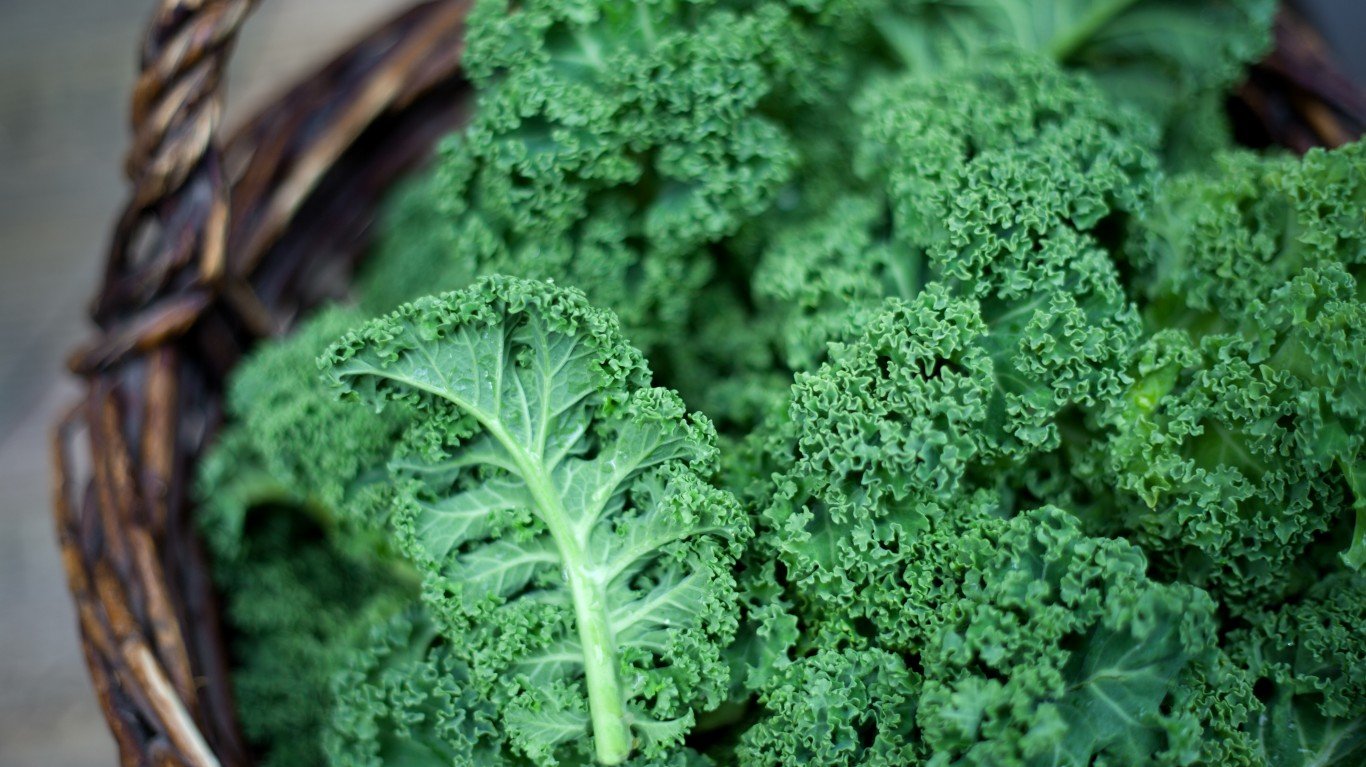
Kale
Like many cool weather greens, kale is grown year-round in California. In 2012, California grew more than any other state in the U.S., with Georgia coming in second and New Jersey third.
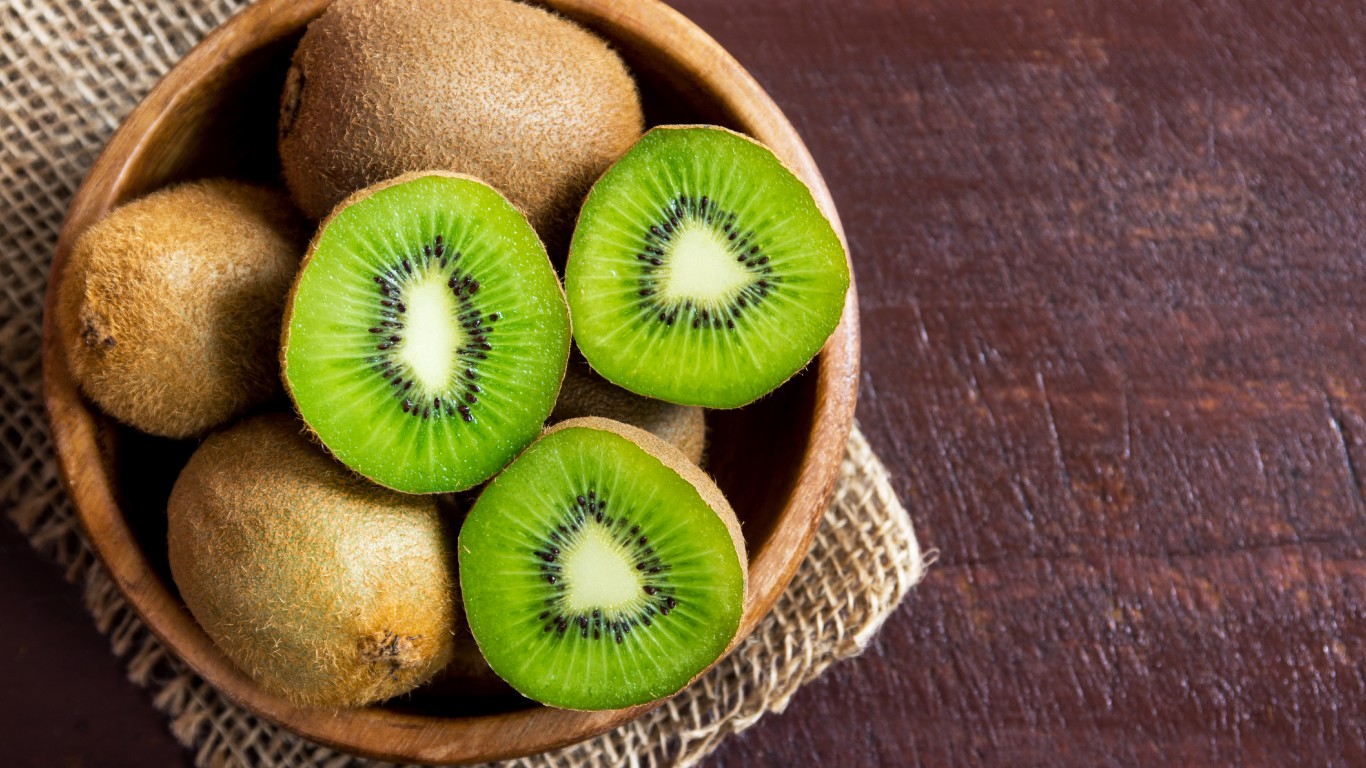
Kiwifruit
California grows most of the domestic kiwis available in the U.S. While they ripen in late fall, cold storage keeps them available into mid-spring.
[in-text-ad]
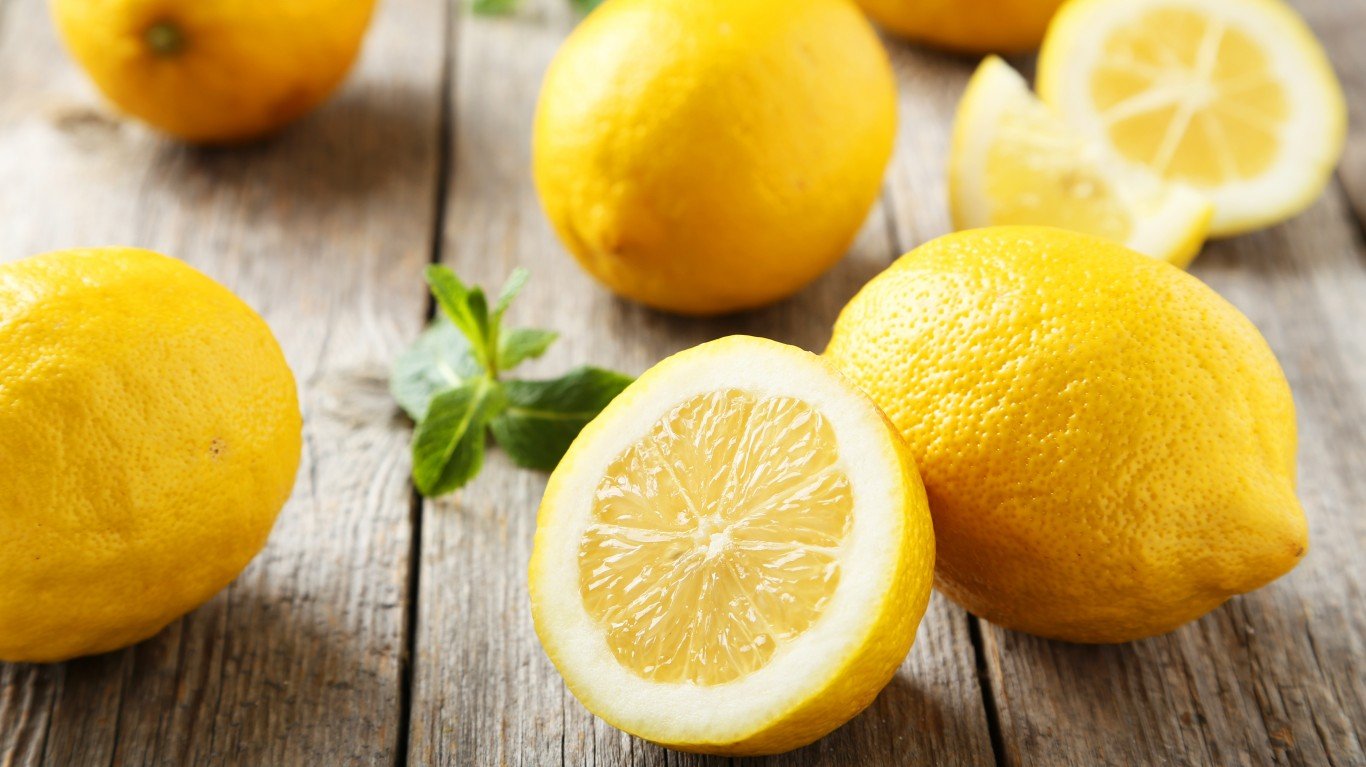
Lemons
The standard variety Eureka lemons are available year-round, but peak production is between late winter and early summer. Meyer lemons are in season now, peaking between November and March.
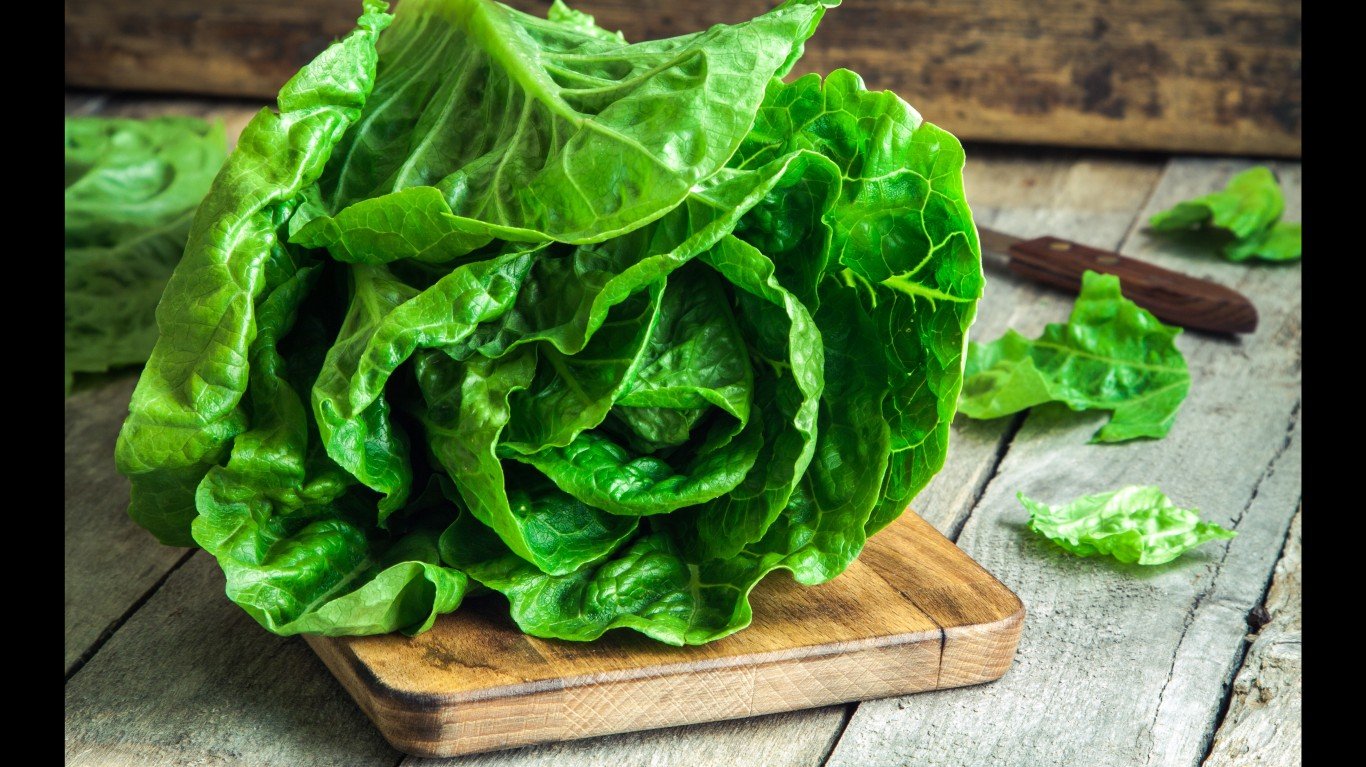
Lettuce
Like many leafy greens, lettuce is a cool season crop that can be grown year-round in California. Arizona also produces a large percentage of U.S. leaf lettuce.

Mushrooms
As mushrooms can be cultivated indoors, year-round, they are available fresh any time of year. Pennsylvania, California, and Florida are the main producers of mushrooms in the U.S.
[in-text-ad-2]
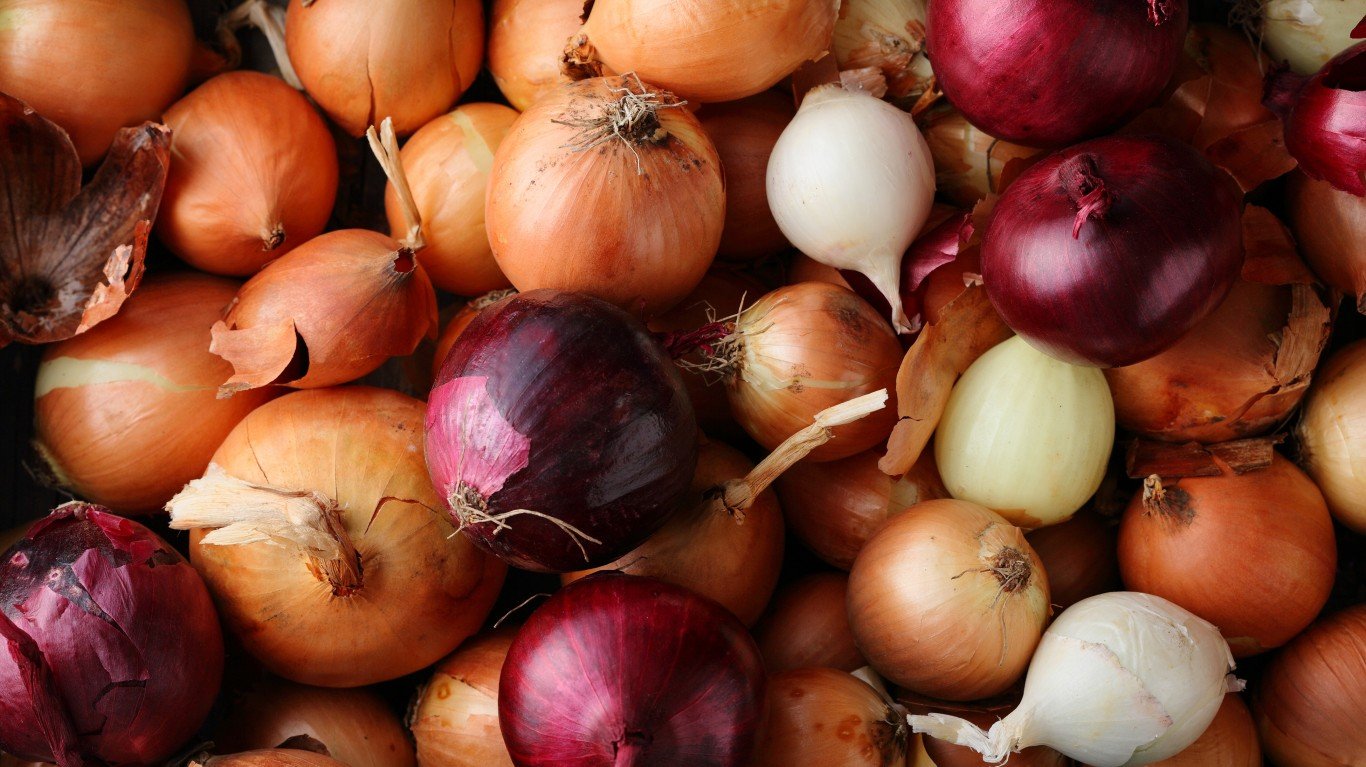
Onions
Commercial onions are grown domestically in over 20 states, and they are available year-round as storage vegetables.
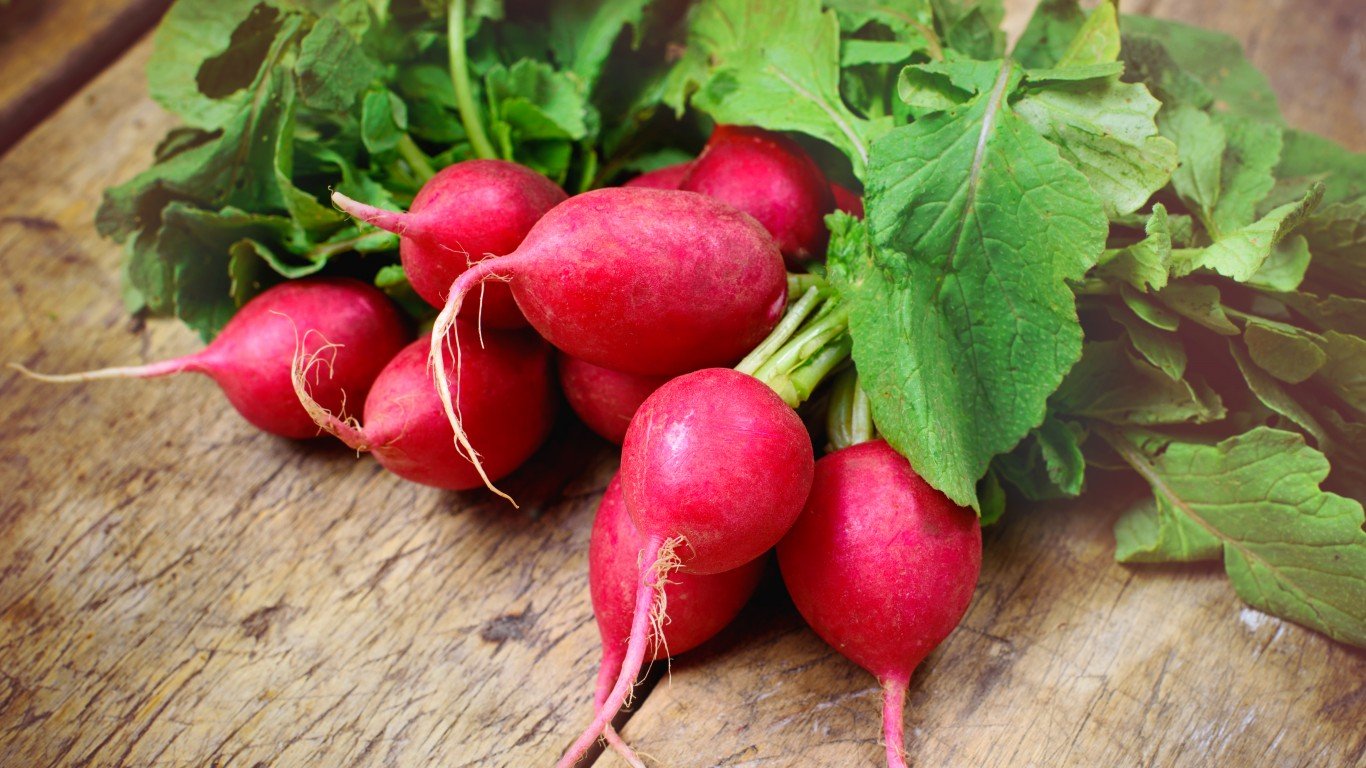
Radishes
While winter storage radish varieties are still on store shelves, spring varieties are available fresh starting in March.
[in-text-ad]
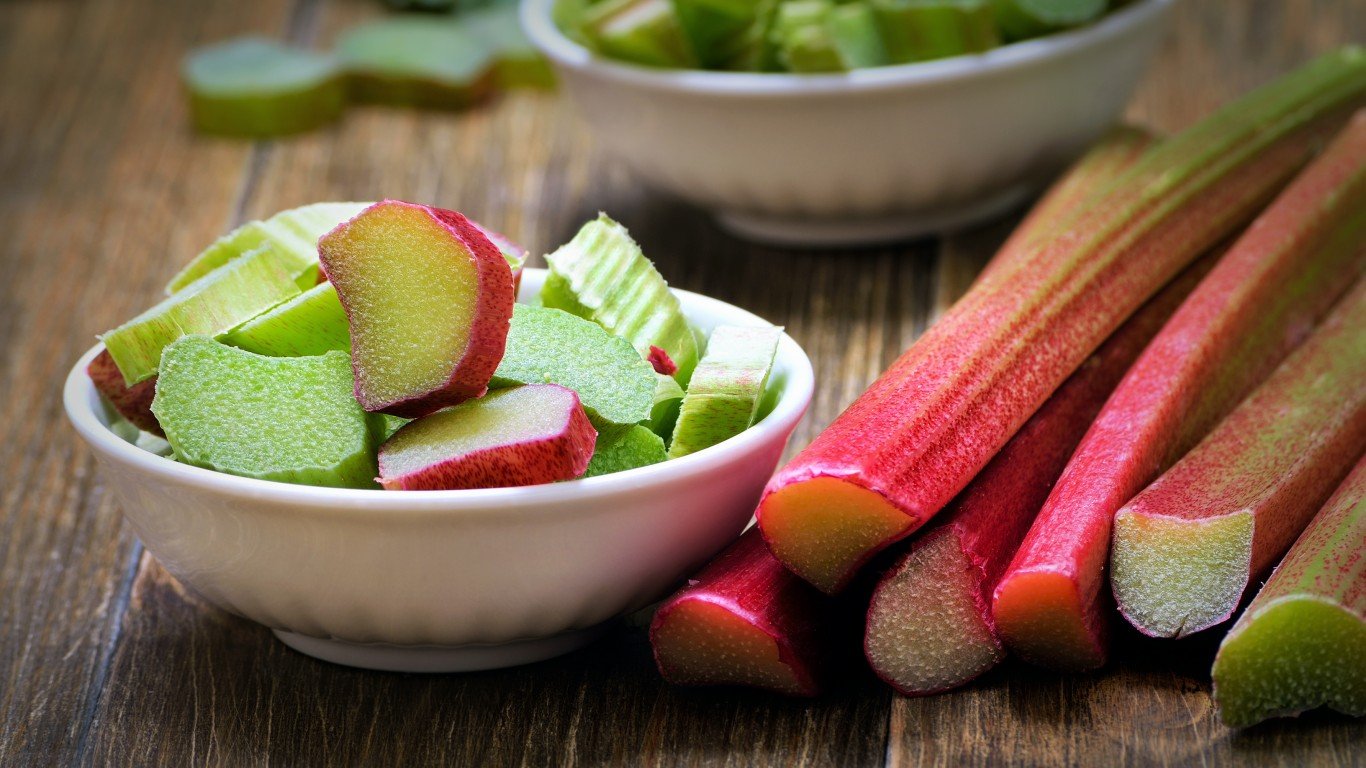
Rhubarb
Although prime rhubarb season runs from April through June, some harvests hit the shelves in late March. Washington, Oregon, and California are the main producers of rhubarb nationwide.
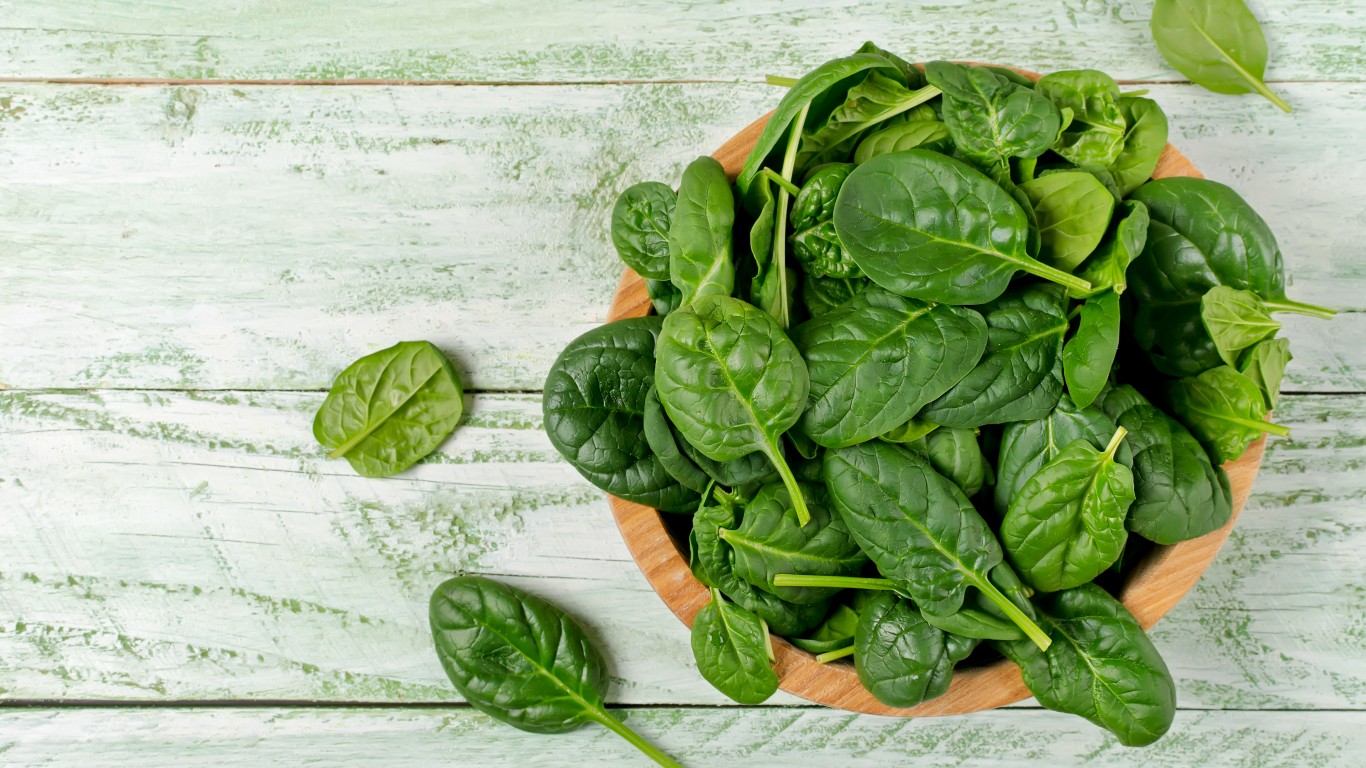
Spinach
Spinach is grown year-round in California–the largest spinach producing state in the U.S–with other major producers being Arizona, New Jersey, and Texas.
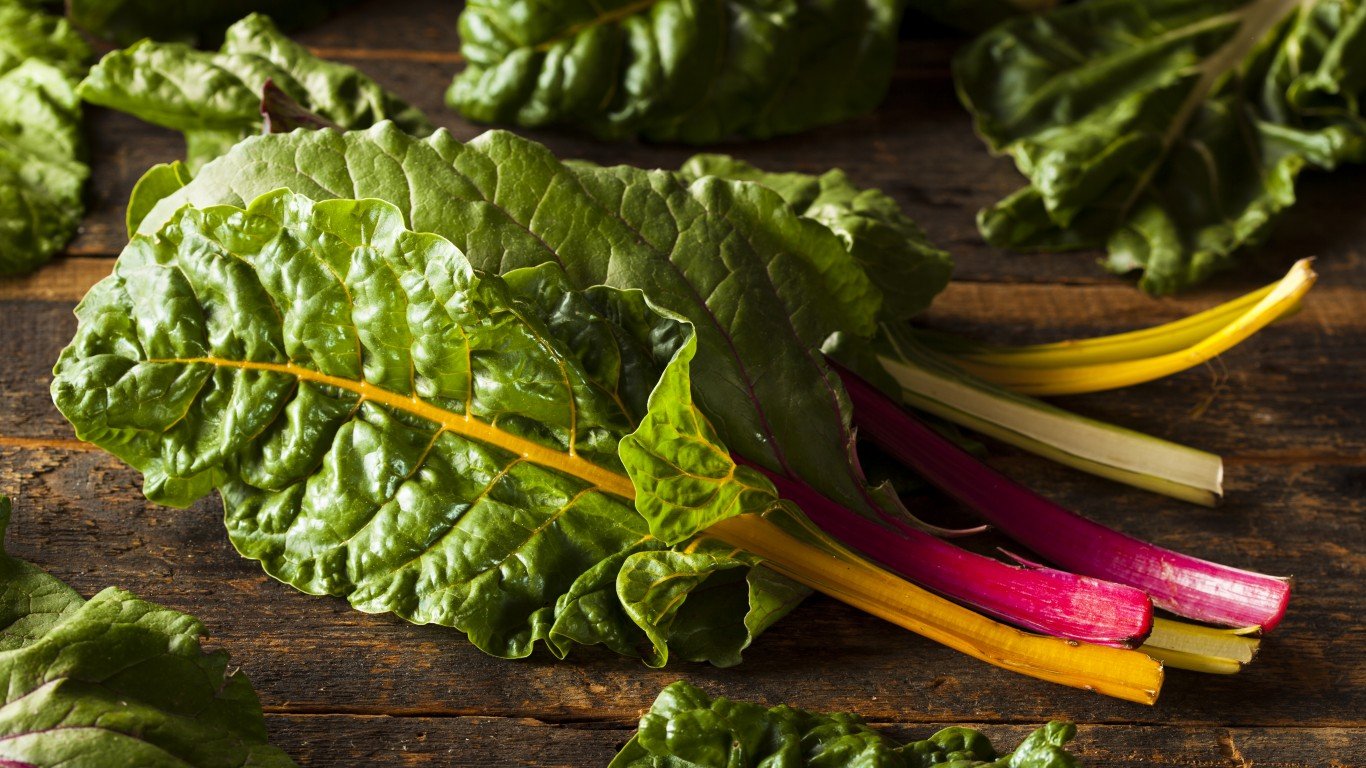
Swiss Chard
Chard, a cool weather green, grows year-round in many areas, including California.
[in-text-ad-2]
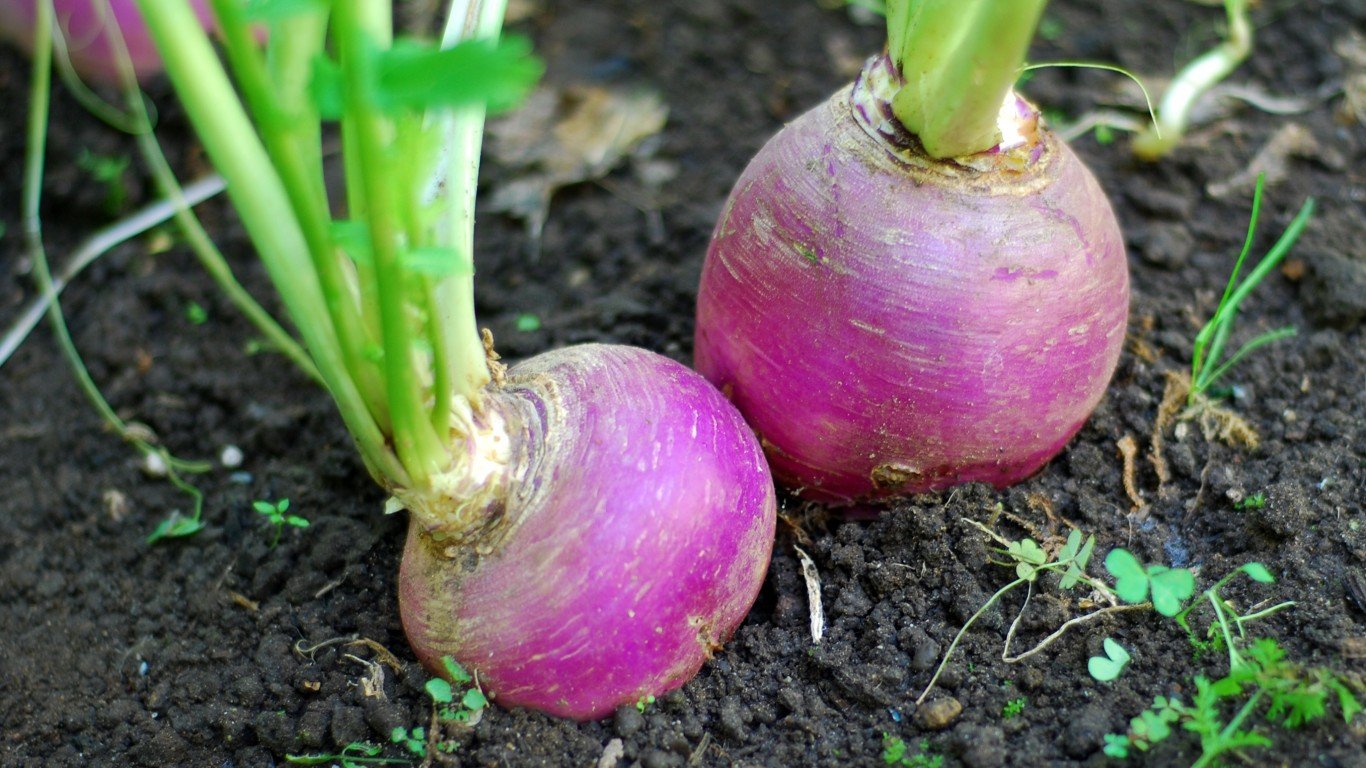
Turnips
Turnips are generally in season from October through March. Although they can be grown year-round, they are freshest in the fall and spring.
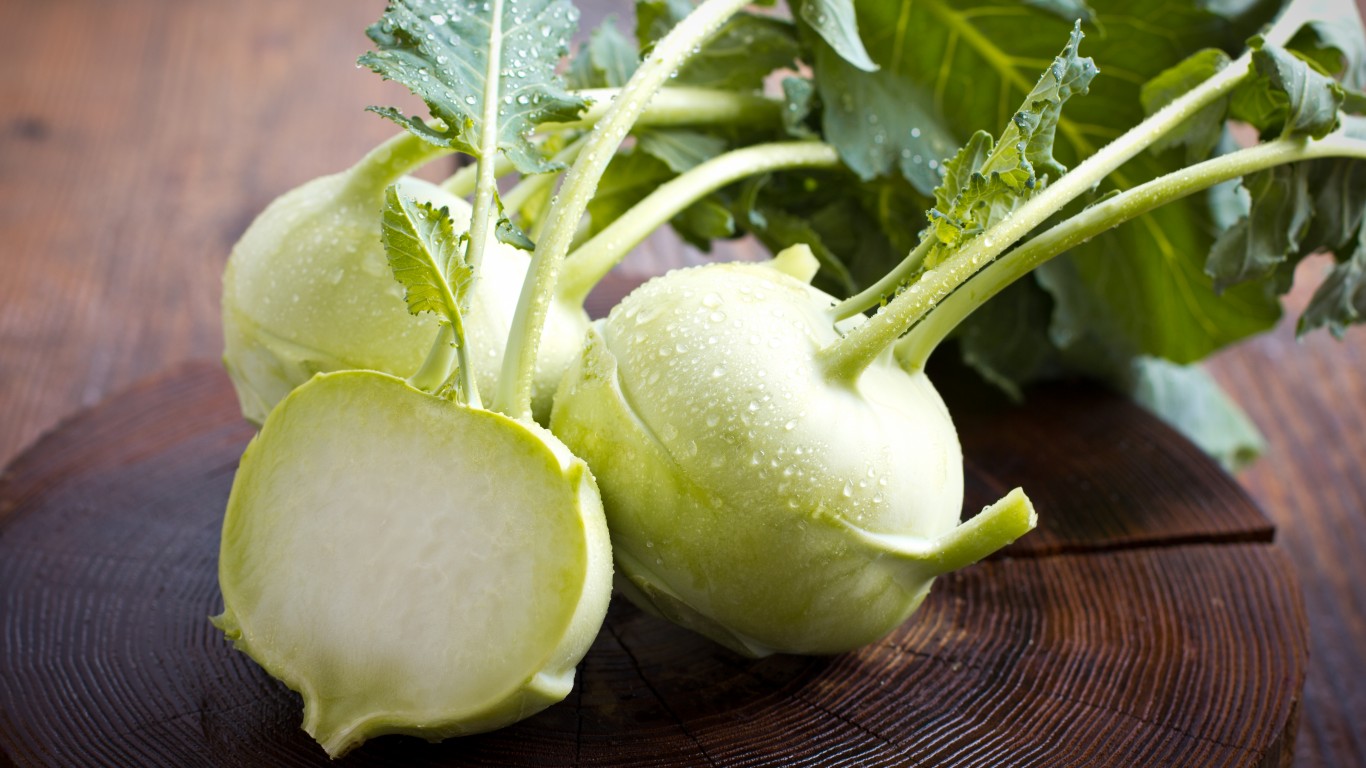
Kohlrabi
Kohlrabi, a relative of broccoli and cabbage, is available year-round but its peak season is fall through spring.
[in-text-ad]
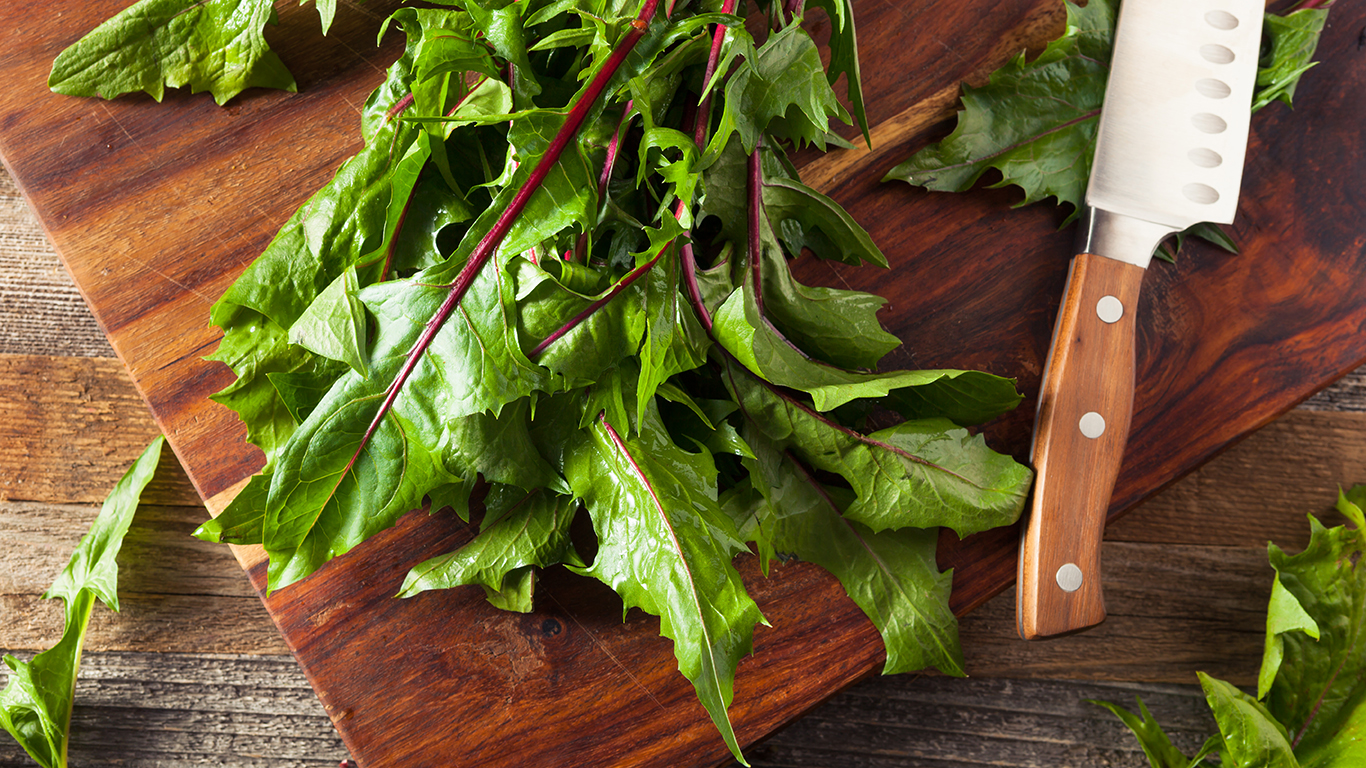
Dandelion Greens
Available year-round but freshest in spring, dandelion greens get bitter as the season progresses. It’s best to buy them between January and May.
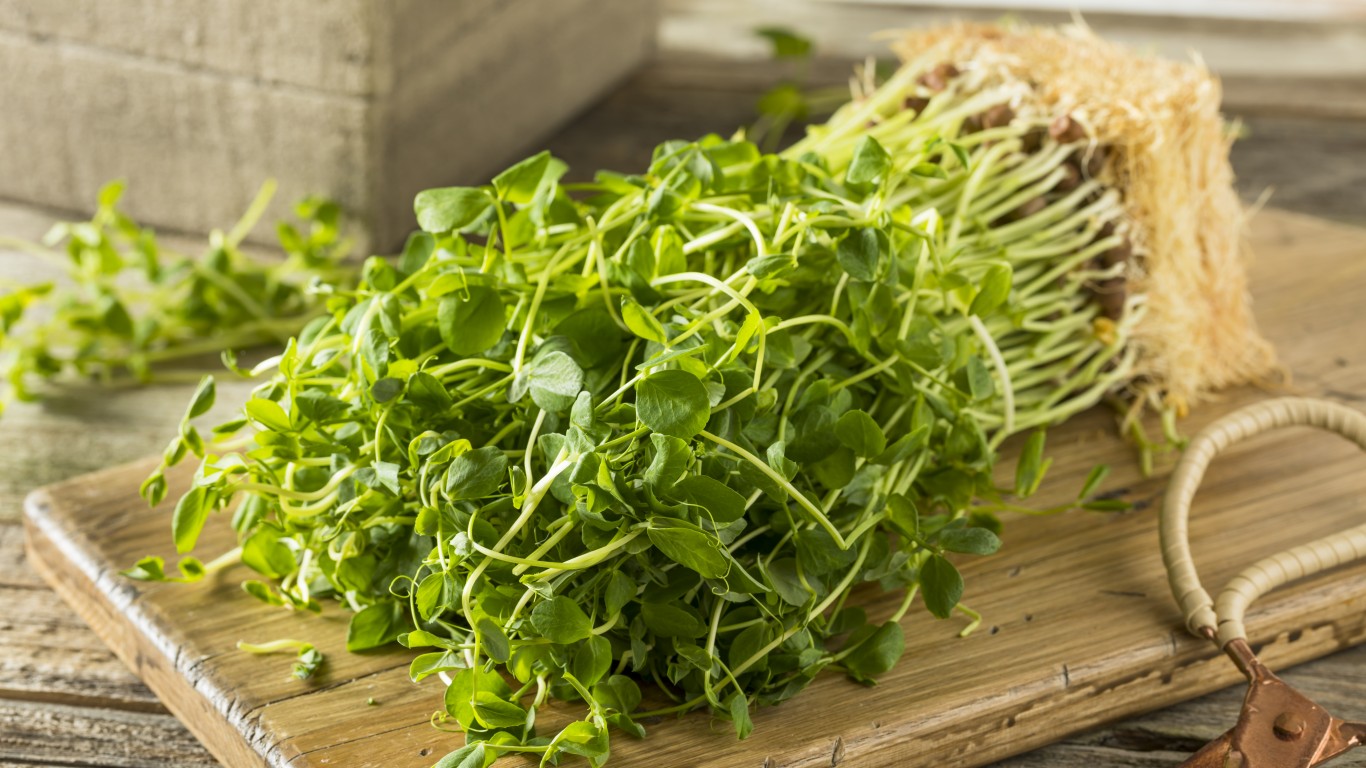
Pea Shoots
Pea shoots are harvested after just two to four weeks of growth. They are available from spring into early summer.
After two decades of reviewing financial products I haven’t seen anything like this. Credit card companies are at war, handing out free rewards and benefits to win the best customers.
A good cash back card can be worth thousands of dollars a year in free money, not to mention other perks like travel, insurance, and access to fancy lounges.
Our top pick today pays up to 5% cash back, a $200 bonus on top, and $0 annual fee. Click here to apply before they stop offering rewards this generous.
Flywheel Publishing has partnered with CardRatings for our coverage of credit card products. Flywheel Publishing and CardRatings may receive a commission from card issuers.
Thank you for reading! Have some feedback for us?
Contact the 24/7 Wall St. editorial team.